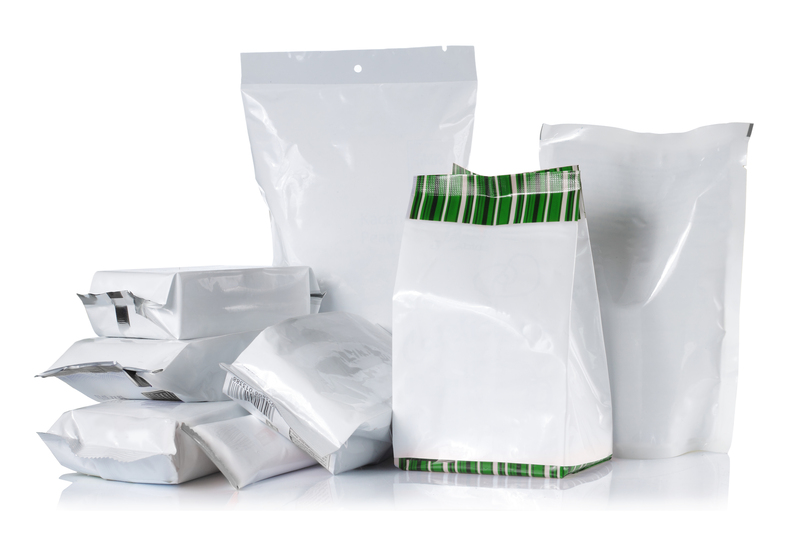Unveiling the Plastics to Dodge for a Greener Life
In recent years, the call for a more sustainable lifestyle has grown louder, with consumers becoming increasingly conscious of their ecological footprint. Among the most significant contributors to pollution and environmental degradation are synthetic plastics. Understanding which plastics to avoid is crucial for anyone seeking to live a greener life. This comprehensive guide unmasks the most problematic plastics and delivers practical, actionable advice for making greener choices every day.

Why Should We Avoid Certain Plastics?
Plastics are everywhere--from food packaging to household products, toys, cars, and even clothing. While plastics offer undeniable convenience, their environmental impact is staggering. Many plastics are made from non-renewable fossil fuels and take centuries to decompose, releasing toxic chemicals that harm wildlife and ecosystems. Some types of plastic even leach hazardous substances during use, posing potential health risks to humans.
Dodging the worst offender plastics is an effective step toward less pollution, healthier living, and preserving our planet for future generations.
Understanding the Plastic Identification Codes
To identify which plastics you should avoid, it's vital to understand their classification system. Most plastic products display a number in a triangle--known as the Resin Identification Code (RIC)--ranging from 1 to 7. These numbers, found on containers and packaging, signify the type of plastic used and its recyclability.
- 1: PETE or PET (Polyethylene Terephthalate)
- 2: HDPE (High-Density Polyethylene)
- 3: PVC (Polyvinyl Chloride)
- 4: LDPE (Low-Density Polyethylene)
- 5: PP (Polypropylene)
- 6: PS (Polystyrene)
- 7: Other (various plastics including polycarbonate, BPA-based plastics, etc.)
Not all plastics are equally dangerous or difficult to recycle.
Top Offender Plastics You Should Dodge
1. Polyvinyl Chloride (PVC, #3)
PVC is commonly used in plumbing pipes, window frames, shower curtains, and some food wrap. While versatile and cheap, it contains phthalates and can release dioxins--a potent carcinogen--when manufactured or burned. The production and disposal of PVC are especially toxic for the environment, contaminating air and water supplies.
- Health Risk: Leaching of harmful chemicals, especially when heated.
- Eco Impact: Difficult to recycle, persists in landfills, releases toxins when incinerated.
- Common Items: Plumbing pipes, vinyl flooring, food packaging, synthetic leather.
Best Practice: Seek alternatives like glass, metal, or BPA/BPS-free plastics.
2. Polystyrene (PS, #6)
Popular as foam cups, disposable plates, takeout containers, and packing peanuts, polystyrene (better known by its brand name, Styrofoam) is one of the worst plastics for the planet. It often breaks into microplastics that pollute oceans and rivers, and its monomer, styrene, is a probable human carcinogen.
- Health Risk: Potential exposure to styrene, especially with hot or acidic foods.
- Eco Impact: Not widely accepted by recycling programs, non-biodegradable, contaminates waterways.
- Common Items: Disposable plates, egg cartons, coffee cups, packing materials.
Best Practice: Choose reusable or compostable alternatives; bring your own food containers and cups when possible.
3. Polycarbonate & Other Plastics Containing BPA (Other, #7)
This broad category, labeled "Other," includes polycarbonate, which often contains Bisphenol A (BPA). BPA is used in many water bottles, food storage containers, and baby bottles. Research has connected BPA exposure with hormonal disruptions, developmental issues, and increased cancer risk.
- Health Risk: Endocrine disruption, links to cancer, reproductive harm.
- Eco Impact: Not easily recyclable; persists in the environment.
- Common Items: Water dispenser bottles, sports water bottles, some baby bottles, tin can linings.
Best Practice: Look for products labeled "BPA-free" or switch to stainless steel, silicone, or glass options.
The Better Plastics: Greener Choices
Not all plastics are equally damaging or difficult to recycle. Here are some considered safer for both health and the planet, though minimizing plastic use overall remains ideal:
- HDPE (#2): Used for milk jugs, detergent bottles, and toys--generally less likely to leach toxins and easily recyclable.
- LDPE (#4): Used for bread bags and cling film--generally considered safer, though still not widely recycled.
- PP (#5): Used for yogurt containers and straws, often heat-resistant and less likely to leach hormones.
Always check local recycling rules, as some of these plastics may not be recyclable in your community.
Everyday Strategies to Avoid Problematic Plastics
1. Swap Single-Use for Reusables
The most direct way to reduce your plastic footprint is by replacing disposable plastics with durable, reusable alternatives. Consider:
- Reusable grocery bags over plastic shopping bags.
- Stainless steel, bamboo, or glass straws rather than single-use straws.
- Refillable water bottles, preferably made from stainless steel or glass.
- Cloth produce bags in place of plastic produce sacks.
2. Dine Green: Avoid Takeout Packaging
Takeout and fast food are notorious for using problematic plastics and polystyrene. When possible:
- Eat in and use restaurant dishes and cutlery.
- Politely decline plastic cutlery.
- Bring your own lunch box or container for leftovers.
3. Choose Food Packaged in Paper, Glass, or Metal
While shopping, select foods packaged in recyclable or compostable materials. Glass and metal containers have a much smaller ecological footprint over their lifetime than most plastics.
4. Check Product Labels
Look for resin codes on the bottom of containers. Avoid products marked with #3 (PVC), #6 (polystyrene), and #7, unless #7 is specifically marked as "PLA" (polylactic acid, a compostable bioplastic).
5. Buy in Bulk
Bulk buying reduces packaging waste overall. Remember to bring your own reusable containers or bags.
6. Opt for Natural Fibers
Clothing and textiles may also contain synthetic plastics. Whenever possible, opt for natural fibers like cotton, wool, or hemp instead of polyester, nylon, or acrylic.
The Hidden Dangers: Microplastics and Your Health
Even if you're dodging the most problematic plastics, microplastics--tiny fragments less than 5mm in size--are now ubiquitous. They have been detected in drinking water, seafood, air, and even within the human body.
- Microplastics are released from synthetic clothing during washing cycles.
- Single-use plastics break into smaller particles over time.
- Cosmetics and toothpaste can include microbeads (now banned in some countries).
Best Practice: Use a microplastic filter for your washing machine and avoid products containing "polyethylene" or "polypropylene" microbeads.
Plastic-Free Alternatives: Steps for a Greener Life
Ready to dodge harmful plastics? The market has responded with a wave of eco-conscious, plastic-free products that help minimize your reliance on disposables. Here are some of the best swaps:
- Beeswax wraps in place of plastic cling film.
- Bamboo toothbrushes over plastic ones.
- Silicone food storage bags instead of single-use sandwich bags (note: silicone has a smaller ecological impact and does not leach harmful chemicals).
- Bar soap and shampoo bars to replace plastic-bottled cleansers.
- Compostable sponges and brushes for dishwashing and cleaning.
- Paperboard or glass-packaged pantry staples rather than plastic bags or jars.
Community and Legislative Efforts: Supporting Systemic Change
While consumer action is vital, systemic change is necessary to drastically reduce plastic production and pollution. Support local and global movements demanding:
- Bans or taxes on single-use plastics.
- Stronger regulations on plastic manufacturing and recycling.
- Investment in biodegradable and compostable materials research.
- Producer responsibility schemes encouraging companies to design recyclable products and manage their waste.
Your voice matters: Contact lawmakers, sign petitions, get involved in local cleanup events, and encourage businesses you frequent to adopt greener practices.
The Future of Plastics: Innovations on the Horizon
Exciting advances in bioplastics and circular economy models show promise. Materials derived from algae, cornstarch, or mycelium offer compostable or biodegradable alternatives to petroleum-based plastics. Enhanced recycling methods, such as chemical recycling, could one day allow us to break plastics back down into their basic components for reuse. As a consumer, staying informed and opting for these innovations supports the momentum for positive change.

Conclusion: Empowering Yourself for a Greener Tomorrow
Unveiling the plastics to dodge for a greener life gives you the power to make mindful choices every day. By steering clear of hazardous plastics--especially PVC (#3), Polystyrene (#6), and BPA-based "Other" (#7)--and embracing sustainable, reusable alternatives, you directly reduce pollution and health risks. Combine personal action with community advocacy and support for innovation for the biggest impact.
Every purchase decision counts. By saying no to toxic plastics and yes to eco-friendly choices, you're investing in a cleaner, healthier, and more resilient planet, not just for yourself, but for generations to come. Start your journey today--one plastic at a time!